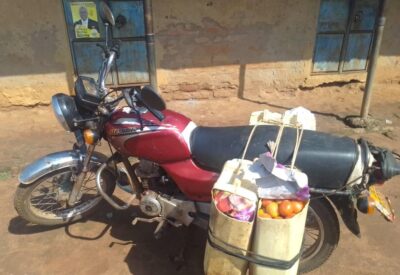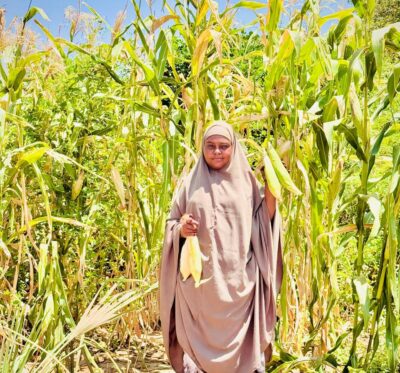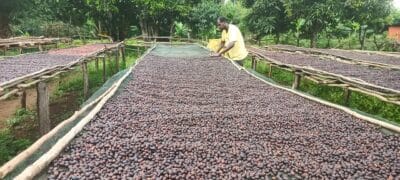News
13 February 2020
Desert locust infestation threatens harvests across eastern Africa

Photo: The locust invasion in Embu, Kenya. Photo courtesy of Murimi, Embu
Several communities working with Farm Africa in Ethiopia and Uganda have had crops, livestock fodder and trees destroyed in the worst desert locust invasion to hit the region in decades.
In Ethiopia, the locusts have caused severe damage in locations in Konso in Southern region and Ambalaje in Tigray Region where Farm Africa is working to help people living across Ethiopia adapt to and mitigate against climate change.
In other locations where Farm Africa works in Ethiopia, including in Halaba in SNNPR and the Bale Eco-region, communities, with assistance from the government, have successfully prevented invading locusts from landing with the use of smoke, gunfire and loud noises from motorbikes, banging rooftops and screams.
The Ethiopian government and development partners including Farm Africa are escalating efforts to manage the situation and minimise damage. The Ethiopian National Bureau of Agriculture’s extension services have offered training and information to farmers on how to avert the invasion of locusts through cultural control means.
Anastasia Mbatia, Farm Africa’s Technical Manager (Agriculture), commented:
“During a visit to the SNNPR region of Ethiopia at the end of January, I encountered swarms of the desert locust keen to invade Haderu and Halaba woredas. I am pleased to inform that local people seemed knowledgeable on mechanical control methods of preventing the desert locusts invading their farms. By making noise by banging iron sheets and hooting, and using smoke from bonfires, the local communities managed to repel all the swarms that were circling the area.”
In Uganda, communities taking part in Farm Africa’s Livestock for Livelihoods project in Karamoja have also suffered damage from the locusts
To date, no Farm Africa projects in Kenya, Tanzania or DR Congo have been affected by the locust invasion, and many of our other projects in Uganda and Ethiopia are also reporting no invasions to date. However, our programmes in Ethiopia, Kenya, Uganda and northern Tanzania all remain on high alert as all four countries are at risk of the invasion worsening significantly, putting food security and livestock pastures at risk.
The FAO warns that if current wet and warm weather conditions continue, the locust infestation is expected to multiply by 500 times by June 2020.
The desert locust is a particularly destructive species that can eat its own weight in food every day. Swarms easily consume entire fields and form mass clouds large enough to block out the sun. The locust is highly mobile and can travel a distance of up to 150km per day.
The long-term effect of the current invasion, which began in Saudi Arabia in 2018 before moving to the Horn of Africa in 2019, will be a high likelihood of cyclical invasions for the next few years.
Farm Africa is advising communities that Integrated Pest Management is the best control mechanism for desert locusts and is highlighting the need for early planning and control before detection.
Based on the successful prevention of desert locusts landing in several project locations in Ethiopia, Farm Africa has developed a one-page briefing sheet on control methods for desert locusts to disseminate to small-scale farmers.




